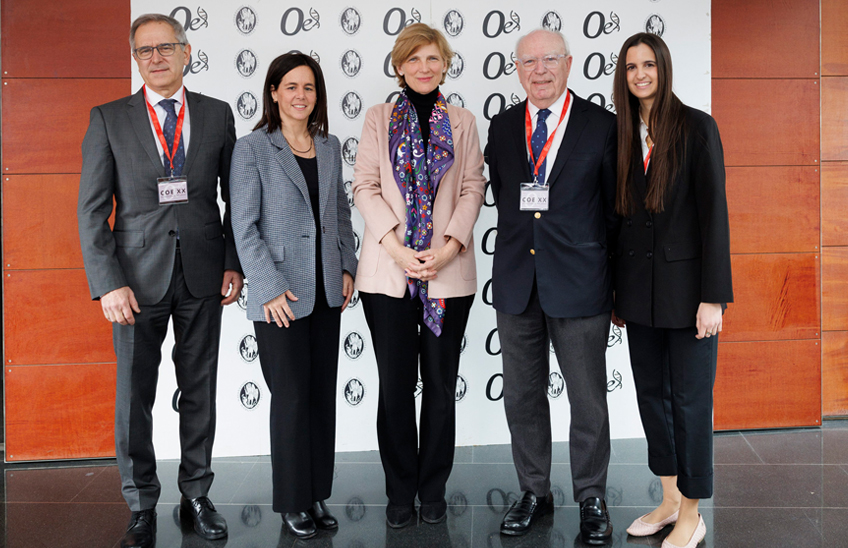65% of women who have their tubal ligation reversed by tubal recanalization become pregnant.
The European Journal of Obstetrics & Gynecology and Reproductive Biology publishes the work of end of Degree of Juan Sastre, graduate of the School of Medicine, with the conclusions on the follow-up of 14,000 patients of the last ten years.

PhotoManuelCastells/From left to right: Dr. José Ángel Mínguez, co-director of the department of Gynecology of the Clínica Universidad de Navarra, Juan Sastre, lead author of the study, and Dr. Juan Luiz Alcazar, specialist of the department of Gynecology of the Clinic.
18 | 12 | 2023
About 20% of women who undergo tubal ligation regret it and wish to have the opportunity to become pregnant again. In these cases, microsurgical tubal anastomosis has established itself as a reproductive technique with a subsequent pregnancy rate of more than 65% fees . This efficacy rate, result of a work of research carried out between the School of Medicine and the Clínica Universidad de NavarraThe results have just been published in the scientific journal European Journal of Obstetrics & Gynecology and Reproductive Biology and have been presented publicly at the congress of the Spanish Society of Gynecology.
With detailed figures, the work of end of Degree by Juan Sastre, graduate in Medicine from the University of Navarra, updates the information disclosed so far on the success of tubal recanalization, covering the clinical history of more than 14,000 women operated on in different countries during the last decade. As its main author emphasizes, "this is the first time that such an extensive meta-analysis of patients who underwent this technique has been carried out and the results are very promising".
Tubal anastomosis is already a consolidated and scientifically proven alternative to in vitro fertilization, with even better efficacy and health results, especially among women over 35 years of age. As Dr. Sastre points out, this surgical technique reduces the subsequent risks associated with in vitro reproduction techniques, such as multiple pregnancies, premature births, preeclampsia or gestational diabetes. "The increased risk that occurs in in vitro fertilization to develop this subject of complications does not occur in women who opt for microsurgical reanastomosis".
A step back for a step forward
Tubal ligation reversal requires a highly specialized team and a personalized analysis of each patient, since there are factors such as age or the technique used in the previous sterilization that can influence the viability of the process. "First of all, a laparoscopy is performed to check the state of the tubes and assess their recanalization. If conditions permit, the anastomosis is performed through a small incision in the abdomen using a microsurgical microscope," says Dr. Luis Chiva, manager of the Fertility Unit and director of the department of Gynecology and Obstetrics of the Clínica Universidad de Navarra.
The Clinic is the only Spanish hospital center that performs this technique by means of microsurgery, and it does so with a success rate similar to international ones, fees . As Dr. Chiva emphasizes, "it is important that those who have undergone tubal ligation know that they can reverse this process and that they have all the information available about the therapeutic options to make the most appropriate decision according to their personal circumstances".
"Many patients are still unaware of this therapeutic option. For this reason, among the objectives of this study is the need to collaborate in promoting the presence of this surgery in hospitals and to stimulate the research about this effective option for restoring fertility," adds Dr. Sastre.




